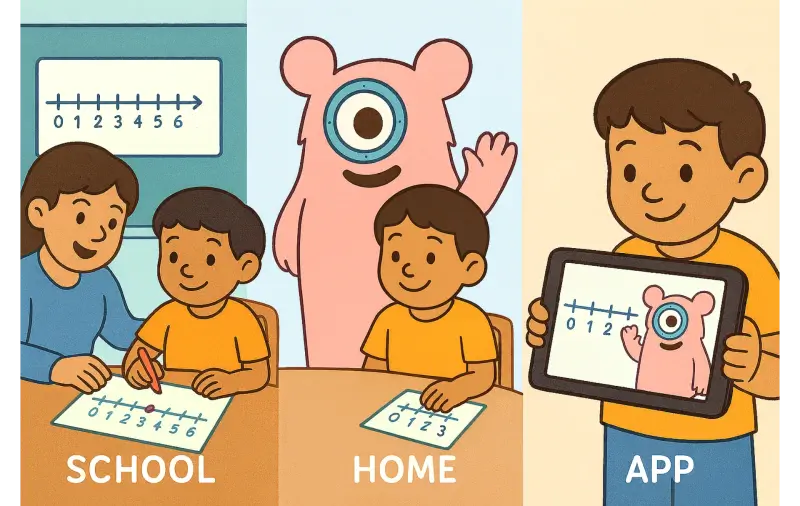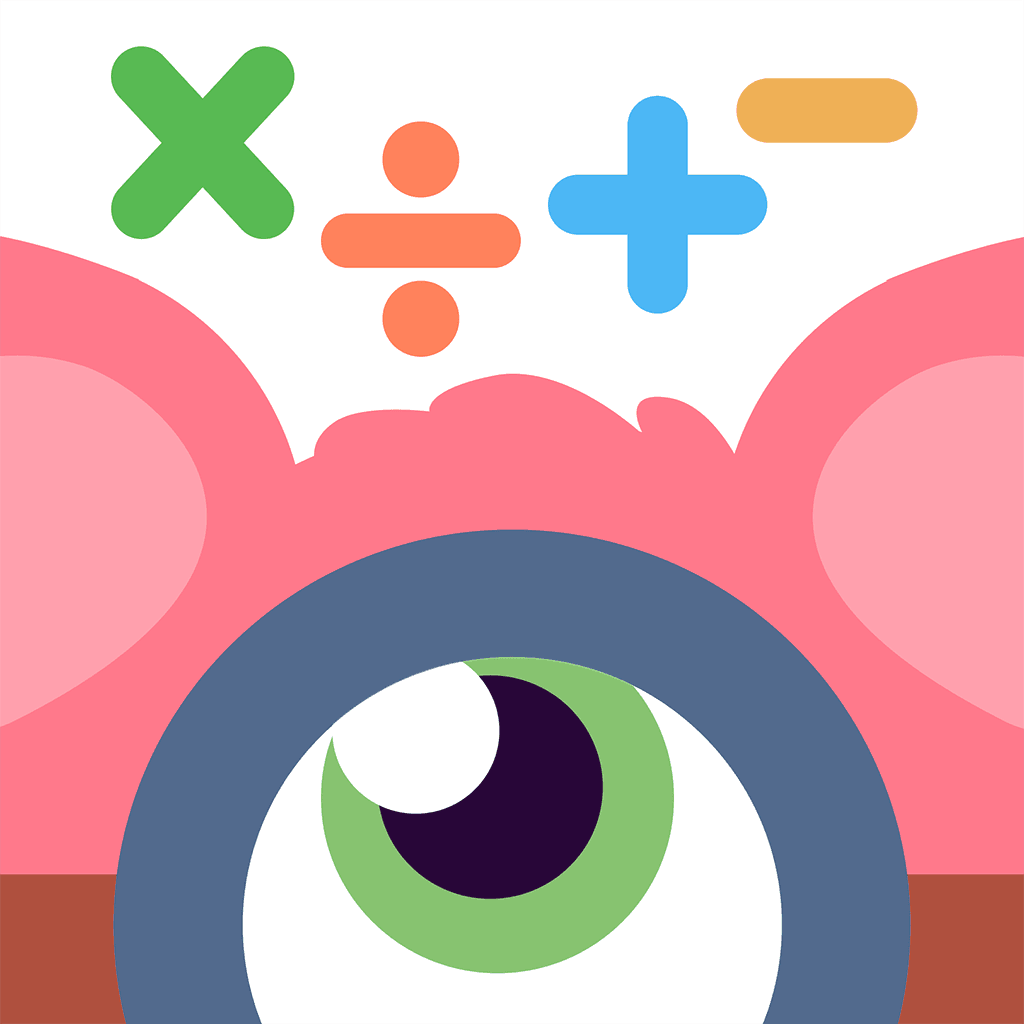Math Accommodations 101: Building an IEP That Actually Helps
TL;DR: A math IEP that actually helps a neurodivergent learner has clear present levels, specific math goals, and everyday accommodations that are tied directly to how that child’s brain processes numbers. Research on educational accommodations for students with ADHD shows that generic supports (like “extra time” alone) rarely move the needle; what works is targeted support plus good instruction. Evidence-based approaches such as the Concrete–Representational–Abstract (CRA) sequence and structured interventions for dyscalculia can make grade-level math far more accessible when they are embedded into the IEP. Pair those supports with calm, visual teaching and progress checks, and the IEP becomes a tool - not just paperwork.
Why math accommodations matter so much for neurodivergent kids
If you’re parenting or teaching a neurodivergent child - ADHD, dyscalculia, autism, or a mix of all three - you’ve probably felt that math is harder than it “should” be. Not because the child isn’t smart, but because the way math is usually taught clashes with how their brain handles attention, working memory, and number sense.
Neuroscience work on math learning disabilities shows that dyscalculia is often linked to differences in brain networks for number sense, visuo-spatial working memory, and cognitive control, which means kids may struggle with basic quantities and written symbols even when they understand the idea conceptually. You can see this clearly in the review on the cognitive neuroscience of dyscalculia.
At the same time, a systematic review of educational accommodations for children and adolescents with ADHD found that accommodations are the most common support schools provide - but they are not always implemented thoughtfully, and many don’t show strong benefits on their own. In other words: writing “extra time in math” into the IEP is not enough. The accommodation plan needs real design.
What an actually-helpful math IEP looks like
Strong math accommodations don’t start with tools; they start with a story of this specific child. That story usually shows up in four places in the IEP:
- Present levels of performance (PLOP/PLAAFP) for math. This is where the IEP clearly explains how the disability impacts day-to-day math learning. For example: “Needs repeated visual models to understand place value” or “Takes twice as long as peers to retrieve basic facts.” Meta-analyses of math interventions for students with learning disabilities show that the most effective programs are those that target specific, well-defined skill deficits, which means the IEP must first describe those gaps in detail.
- Specific, measurable math goals. Rather than “will improve in math,” you might see “will solve addition and subtraction problems within 20 using a number line with 80% accuracy across 3 of 4 trials.”
- Targeted accommodations and supports. These should connect directly to what the PLOP says. If working memory is a challenge, you might see step-by-step checklists and reduced multi-tasking demands on tests.
- Progress monitoring. The IEP should spell out how you’ll know it’s working - short probes, work samples, or frequent quick checks, not just end-of-term grades.

Step-by-step: Designing math accommodations for your IEP meeting
1. Map the barriers, not just the grades
Instead of starting from “They’re getting 4/10 on their math tests,” dig into why. Is the child misreading symbols? Losing track of steps? Freezing due to anxiety? Research on adaptive number-sense interventions for dyscalculia shows that when supports target specific barriers (like symbolic access to quantities), kids can make large gains - even without changing their intelligence or effort.
Understanding whether the barrier stems from attention challenges, number-processing differences, or math anxiety can help the team choose accommodations that truly match the student’s needs.
2. Choose evidence-based instructional approaches to embed in the IEP
Accommodations are most powerful when they ride on top of good teaching. For many neurodivergent learners, the Concrete–Representational–Abstract (CRA) sequence is a game-changer: students first manipulate real objects, then work with pictures, and only finally move to symbols. A mixed-methods study in high school Algebra found that CRA and manipulatives improved both understanding and retention for students in inclusive classes.
Recent meta-analytic work also shows that, across dozens of studies from kindergarten through third grade, systematic math interventions for students with or at risk for learning disabilities produced solid effects on learning. That’s a strong reminder: what’s written in the IEP should connect to consistent, structured math support, not just test-day accommodations.
3. Turn research into concrete accommodation ideas
Here are examples of math accommodations that line up with what research and classroom practice recommend:
- Visual and spatial supports. Use graph paper, place-value charts, and colour-coded columns to help with alignment and place value. These fit naturally with CRA-based teaching and are especially supportive for dyscalculia and ADHD.
- Manipulatives and visual models. Allow counters, number lines, fraction bars, or digital manipulatives during both instruction and assessment. Evidence from CRA studies on explicit CRA instruction suggests that concrete and representational stages boost conceptual understanding before students are asked to work purely symbolically.
- Scaffolded word problems. Break multi-step problems into chunks, remove numbers at first, and add them later. This structure lightens the load on working memory while strengthening reasoning.
- Adjusted pace and format. Instead of racing through a full worksheet, students might complete a smaller set of problems deeply, with time to explain their reasoning or show their thinking using drawings.
- Assistive technology. Some learners benefit from calculators for complex computation, text-to-speech for word problems, or carefully designed digital math apps. A meta-analysis of technology-based math supports found moderate positive effects on achievement in digital-based math interventions for children, especially when tools were aligned with instruction.
Making sure accommodations are actually used
One of the biggest complaints from parents is, “It’s in the IEP, but it’s not happening.” Unfortunately, the accommodation literature for ADHD backs this up: the systematic review of educational accommodations for ADHD noted that accommodations are often inconsistently implemented and rarely evaluated for impact.
Here are ways to keep math accommodations alive and not just on paper:
- Spell out the who, when, and where. Instead of “Use number line when solving multi-digit subtraction,” write “General education teacher will model and require number line use for at least 5 problems per math lesson for the first semester.”
- Use quick, regular progress checks. Weekly 5-minute math probes can show whether the combination of instruction + accommodations is helping.
- Invite student voice. Many teens with ADHD describe feeling more successful when they understand why an accommodation exists and how to ask for it and using simple self-advocacy phrases designed for neurodivergent learners can help them speak up confidently in class or during IEP conversations.
Home-school teamwork: parents, teachers, and apps on the same side
The best math accommodations don’t live only at school. When home routines, classroom practices, and digital tools line up, the child experiences less confusion and more confidence.
For example, if the IEP offers number lines and visual fraction models in class, parents can mirror the same approach using simple tools at home or ADHD-friendly apps. Research on digital-based math interventions suggests that technology can amplify learning when it aligns with evidence-based instruction rather than replacing it.

Conclusion
FAQs
Do accommodations lower the bar for my child?
No. Accommodations change the path to the goal, not the goal itself. A student might use manipulatives or graph paper to solve the same grade-level problem as their peers. Reviews of math interventions for students with learning disabilities show that when supports are well designed, students can reach comparable conceptual goals even if their route looks different.
How do I know if a math accommodation is working?
Look for three things: the child is using it regularly, their stress is going down, and their accuracy or understanding is going up. Short curriculum-based measurements were used in many CRA and intensive intervention studies, and you can borrow the same idea in school: a quick probe every week or two.
Can digital tools be written into the IEP?
Yes. If a tool is genuinely necessary for access - such as a text-to-speech reader or a particular math app - it can be named in the accommodations or assistive technology section.
What if my school team is unsure how to support dyscalculia?
You can bring research with you. The neuroscience overview in Cognitive Neuroscience of Dyscalculia and Math Learning Disabilities and the intervention examples in The Number Race study give concrete talking points about number sense, visual models, and intensive practice.
References
- Lovett, B. J., & Nelson, J. M. (2021). Systematic Review: Educational Accommodations for Children and Adolescents with ADHD.
- Gersten, R., et al. (2009). Mathematics Instruction for Students with Learning Disabilities or Difficulty Learning Mathematics.
- Kaya, S., & Aydin, A. (2023). Using the Concrete–Representational–Abstract Sequence to Teach Mathematics with Explicit Instruction.
- Prosser, S. K., et al. (2023). Concrete–Representational–Abstract (CRA) Instructional Practices for Students with Learning Disabilities.
- Miller, A. H., et al. (2025). Dosage Response in Intensive Mathematics Interventions for Students with or at Risk for Mathematics Learning Disability.
- Wilson, A. J., et al. (2006). An Open Trial Assessment of “The Number Race”, an Adaptive Computer Game for Remediation of Dyscalculia.
- Menon, V., et al. (2019). Cognitive Neuroscience of Dyscalculia and Math Learning Disabilities.
- Benavides-Varela, S., et al. (2020). Effectiveness of Digital-Based Interventions for Children with Mathematical Learning Difficulties.
